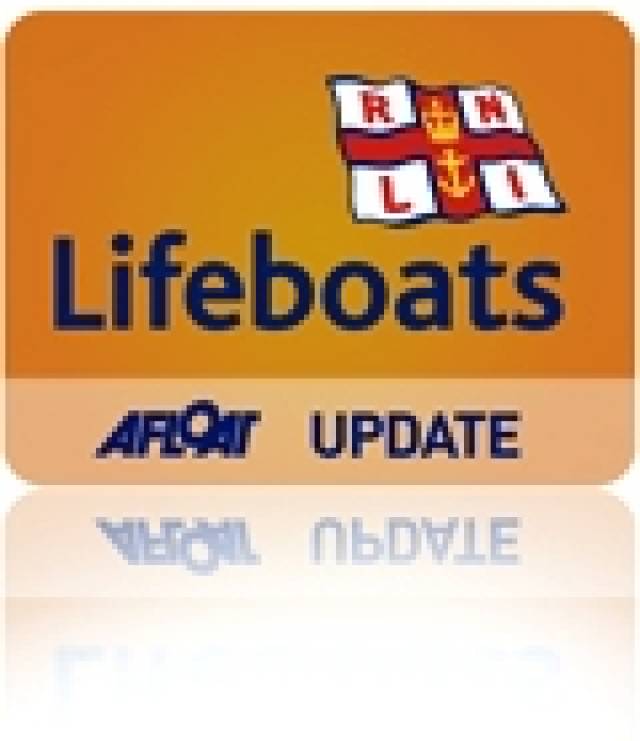#rnli – As Royal National Lifeboat Institution (RNLI) research reveals more fishermen die in January than in any other month of the year, the lifesaving charity has launched a hard-hitting campaign encouraging fishermen to make sure their boats keep them safe at sea – with an emotive advert due to be displayed around the town of Kilkeel.
The campaign features five short films which provide practical advice and use easy to follow animation. The films show how to keep fishing boats stable and highlight factors that lead to dangerous instability, with RNLI research showing that the majority of deaths in the commercial fishing industry occur when vessel stability is lost.
RNLI figures show that 59% of commercial fishing fatalities were due to a loss of vessel stability leading to capsize, leaking or swamping between 2010 and 2013 – with 30% of deaths occurring in the month of January when seas can be rough and water temperatures are at their lowest. The campaign is targeted at fishermen who work on vessels under 15m in length, as the majority of fishing-related fatal incidents (73%) occurred on fishing boats in this category.
The films cover five key areas that lead to boat instability: overloading, watertight integrity, free surface effect2, modifications and hauling.
The films, which are all under 10 minutes in length, feature experts Peter Duncan, lecturer from the Scottish Maritime Academy, and RNLI Fishing Safety Manager and former commercial fisherman Frankie Horne. They can be viewed at RNLI.org/stability.
Alexander McCauley volunteer lifeboat crew member from Kilkeel RNLI lifeboat station, who is also a commercial fisherman, said: 'I know just how demanding and dangerous commercial fishing can be, especially in rough conditions throughout the winter months. I'd encourage all fishermen to take a look at these films at RNLI.org/stability. They provide excellent, practical advice in an easy to digest format.
'It's easy to get complacent with boat safety checks and it can be very tempting to cut corners to maximise a haul. But these films highlight just how easily you can compromise your boat's stability by doing this, and the consequences can be fatal.'
Emotive adverts are also being used throughout the campaign, using the strapline 'Dad's gone fishing'. The powerful image used in the adverts shows coat hooks in a family home. The coats of mum and two young children are hanging up, but dad's coat is missing – he's failed to return home from fishing.
This advert will be displayed on an ad van driving around Kilkeel in early January. The hard-hitting advert will also appear on Facebook posts targeted at fishermen and their families and friends, in commercial fishing publications and websites.
In addition to the adverts, drinks glasses, coasters and coffee mugs have been produced to support the campaign and will be distributed to pubs and bars at fishing ports across the UK and the Republic of Ireland in January. These products feature key safety tips and point fishermen to the vessel stability films online at RNLI.org/stability.
Frankie Horne, RNLI Fishing Safety Manager, said: 'Data3 shows that, tragically, 49 fishermen died between 2009 and 2012 across the UK and Ireland. We hope that this campaign will help prevent further deaths at sea.
'The majority of these fatalities were fishermen working on boats under 15 metres long and 30% of deaths occurred in the month of January, when sea conditions are often very rough and the water temperature is dangerously low.'
The films offer tips and guidance on areas including:
Leaks, overloading and the free surface effect2 of a loose catch can all make a vessel unstable.
Keep your boat watertight by checking hatches are closed at sea.
Tie down loose kit and keep scuppers clear.
When modifying a fishing boat, get professional advice on stability first.
Cut the net if hauling in a heavy catch makes your boat list.
'I would also like to remind fishermen of the importance of wearing a personal floatation device. Our figures show that of all commercial fishing fatalities between 2010 and 2013, 59% of those who died were not wearing a lifejacket or buoyancy aid,' added Frankie Horne.
Between 2009 and 2013, RNLI lifeboats launched 2,555 times to incidents involving commercial fishing boats, rescuing 3,762 people.
1 RNLI-commissioned causal analysis of fatalities in waters around the UK and Republic of Ireland between the period 2010 and 2013.
2 Definition of free surface effect In a partly filled tank or fish hold, the contents will shift with the movement of the boat. This 'free surface' effect increases the danger of capsizing. The centre of gravity moves over to the side, making the vessel less stable.
3 Marine Accident Investigation Branch (MAIB) and Marine Casualty Investigation Board (MCIB) data 2009–12.































































